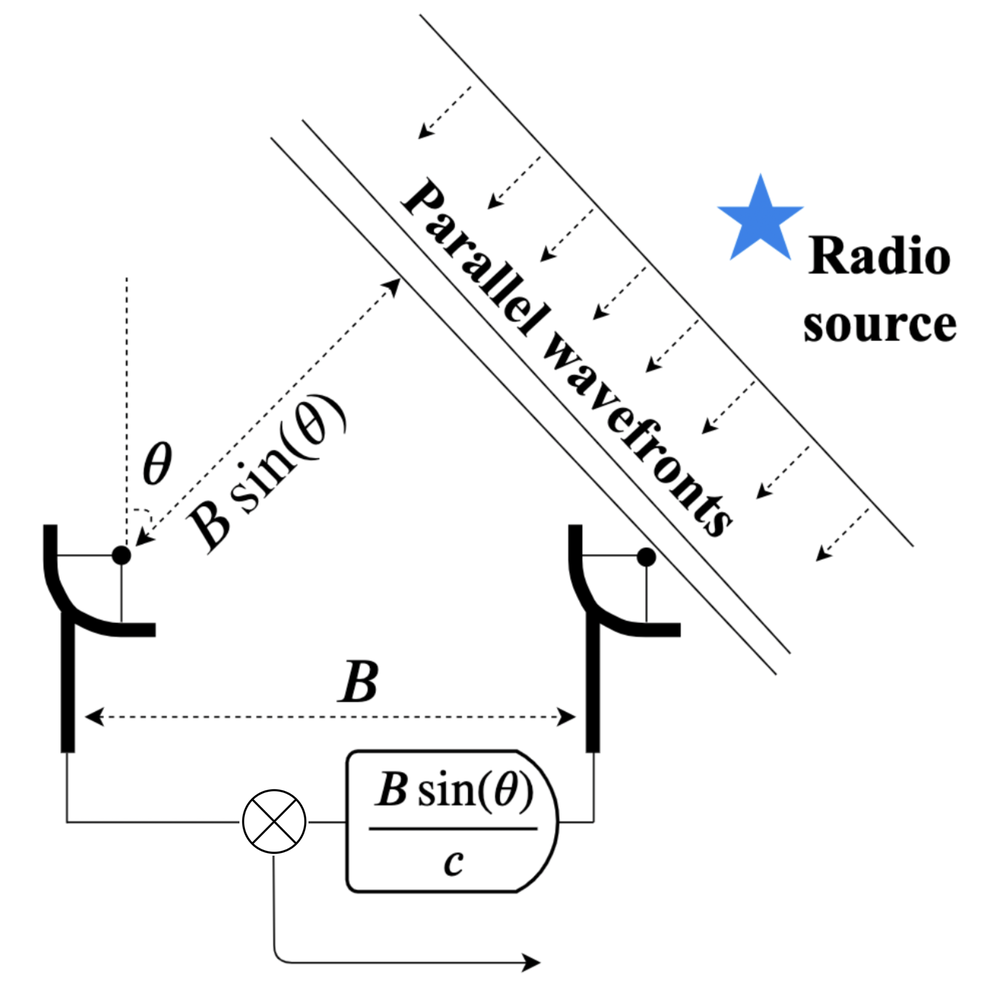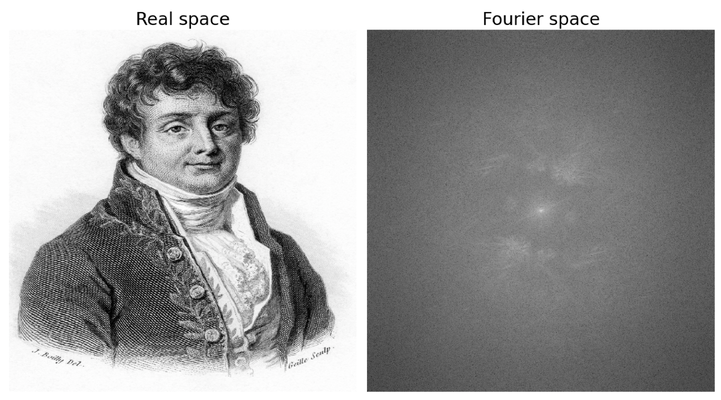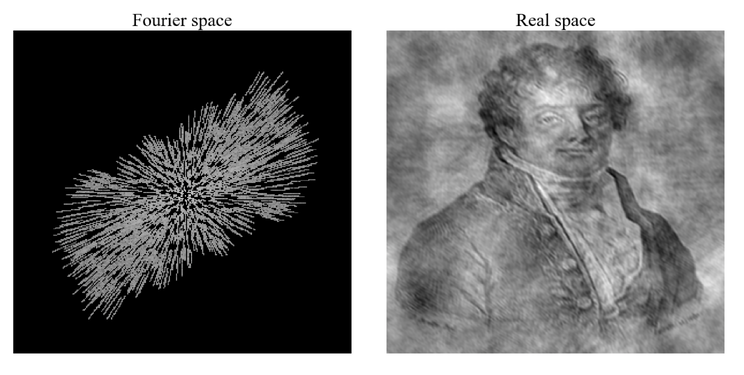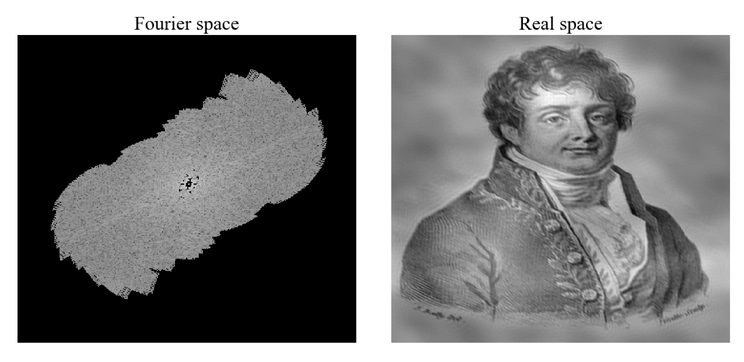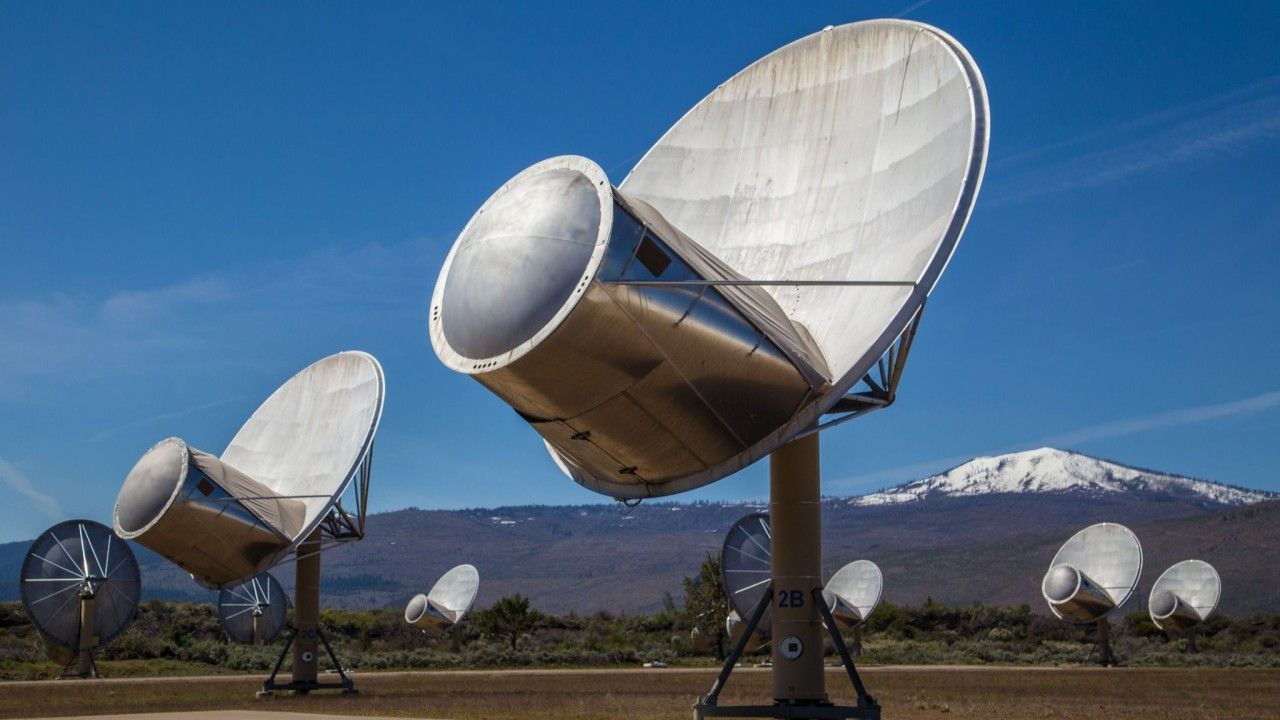
The Allen Telescope Array, Hat Creek Radio Observatory. Credit: Alexander Pollak.
Introduction
Radio interferometry is a technique in radio astronomy where signals from two or more radio telescopes are combined to simulate a much larger telescope, allowing astronomers to achieve higher resolution than a single dish could provide.
Here’s how it works, in simple terms:
- Each antenna in an array receives radio waves from the sky.
- The signals are digitized and time-stamped with extreme precision.
- These signals are then correlated (mathematically combined), taking into account the time delays due to the different positions of the antennas.
- This process produces interference fringes, from which astronomers can reconstruct detailed images of astronomical radio sources, often using techniques like Fourier transforms.
- The further apart the antennas, the finer the detail that can be spatially resolved. This is called baseline length.
How to form a radio image
Forming images of the sky in radio astronomy using interferometers is inherently a digital signal processing (DSP)-intensive task. Signals from all antennas are digitized, typically using high-speed analog-to-digital converters (ADCs), then filtered and channelized, often using a polyphase filterbank. This process facilitates efficient correlation of signals from each antenna pair (or baseline), a method known as an "FX" correlator. In this approach, the correlation is performed as a multiplication in the Fourier domain.
A delay is often introduced prior to correlation to compensate for the geometric light travel time and cable delays between elements of an interferometer. The light travel time depends on the length of the projected baseline B relative to the source angle θ, as illustrated in the schematic above. In modern interferometers, this compensation is implemented digitally using a combination of integer-sample delays and fractional delays, typically realized with FIR filters.
The output of a correlator, computed across all available baselines of an interferometer, is integrated over a period of time to produce what’s known as a correlation matrix. Each element of this matrix corresponds to a specific baseline and effectively samples a spatial frequency component of the sky. In other words, an interferometer measures discrete points in the two-dimensional Fourier transform of the sky’s brightness distribution.
To form an image of the sky, one takes the inverse 2D Fourier Transform of the correlator output. However, for virtually all radio interferometers, the distribution of projected baselines on the ground cannot fully sample the entire Fourier space of the sky. In other words, the spatial frequency coverage is incomplete. This partial sampling leads to distortions and artifacts in the resulting image, since some spatial frequencies were never measured. To mitigate these effects, astronomers use a deconvolution technique known as the CLEAN algorithm, which attempts to remove the imprint of the interferometer’s point spread function. (Fun fact: the raw image obtained from a simple inverse FFT is called a “dirty” image, and the CLEAN algorithm is used, quite literally, to clean it and produce a more accurate reconstruction.)
Just for fun, I simulated the response of the interferometer I work with, the Allen Telescope Array (ATA), using an image of Joseph Fourier as the mock radio source. The simulation represents a 5-minute observation. As expected, the resulting real-space "dirty" image shows clear distortions and artifacts due to the limited Fourier sampling of the array.
To make things even more fascinating, and this is where I believe the real beauty of radio astronomy lies, astronomers take advantage of the Earth’s rotation. As the Earth turns, the projected baselines between antennas shift relative to a fixed point on the sky. This causes each antenna pair to trace out different paths in the Fourier plane over time. Put simply, by allowing the sky to rotate sidereally, an interferometer can sample more spatial frequencies without physically moving the antennas. This technique, known as Earth-rotation aperture synthesis, is so fundamental to modern radio astronomy that it played a central role in discoveries recognized with the Nobel Prize in Physics in 1974.
The image below shows the same set of antenna pairs, but this time for a 2-hour simulated observation instead of just 5 minutes, taking advantage of the sky’s sidereal motion (and the Earth-rotation aperture synthesis technique). With more time, the projected baselines sweep across a wider range of spatial frequencies, allowing the interferometer to sample much more of the Fourier space. As a result, the reconstructed image shows significantly fewer distortions and artifacts.
Conclusion
I've often been asked how radio astronomy relates to image and digital signal processing, and I've always wanted to explain it without ping into heavy formulas, making it accessible to a broader audience. The truth is, radio astronomy is deeply rooted in DSP at every level. What I’ve shown here just scratches the surface of how radio interferometers work and the signal processing that powers them.
Beyond basic imaging, the field involves a wide array (pun intended) of advanced techniques: calibrating delay and phase across antennas, mitigating radio frequency interference, ensuring precise clock timing, performing polarimetric analysis, implementing beamforming strategies, managing dynamic power levels, and much more...
At its core, radio astronomy is a blend of RF engineering and high-throughput DSP. From raw IQ samples streaming into a software correlator (often handling several terabits per second on GPUs) to generating data products that are just the starting point for further analysis, the entire pipeline is a feat of signal processing. And only after all that groundwork can astronomers begin to extract the scientific insights they seek.
This post was originally published by Wael Farah on LinkedIn.
News
Related News

Mars’s Ancient Carbon Cycle: How Rocks on Mars Tell the Story of a Vanishing Climate
#SETI Live Blog #Mars #Astrobiology #SETI #Solar System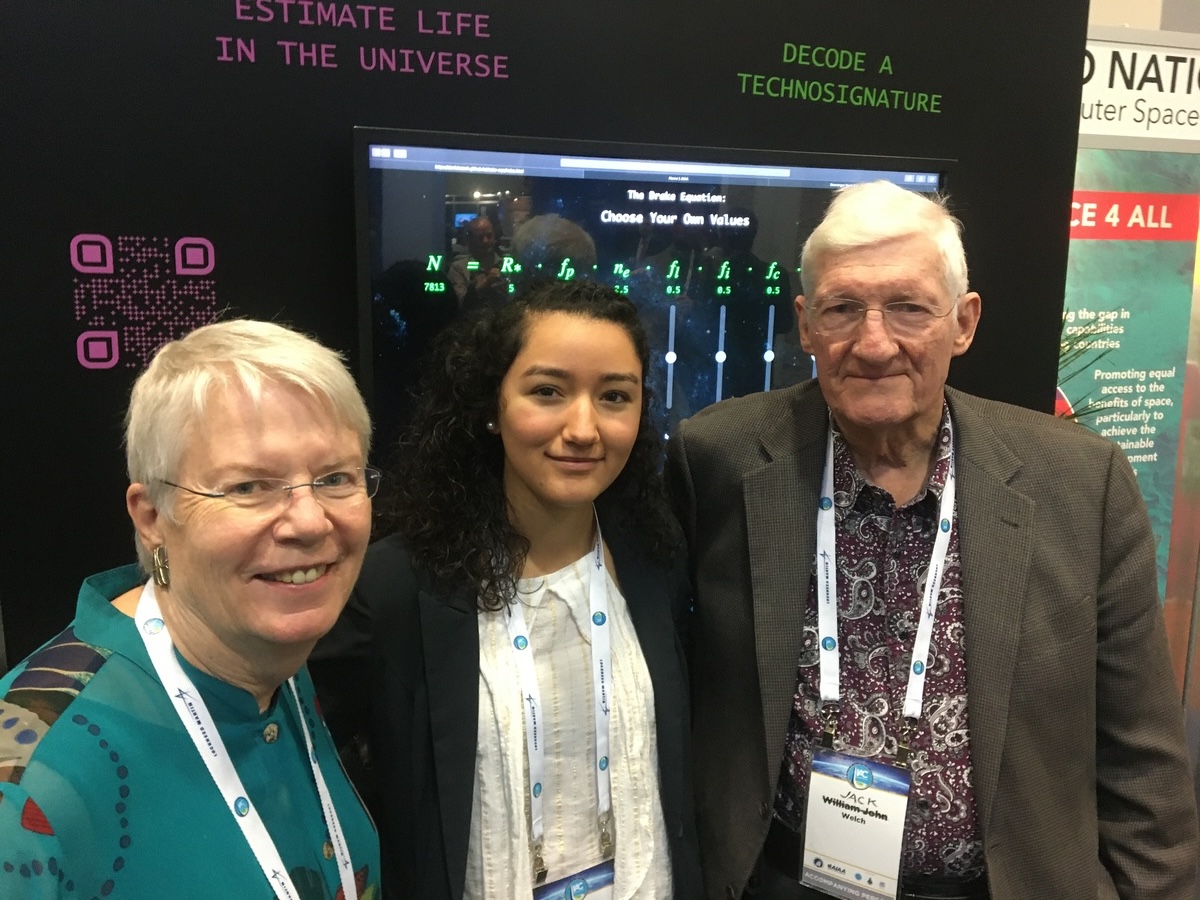
SETI Institute Names First William J. Welch Postdoctoral Fellow
#Press Releases #ATA #Fellowships #SETI #Hat Creek Radio Observatory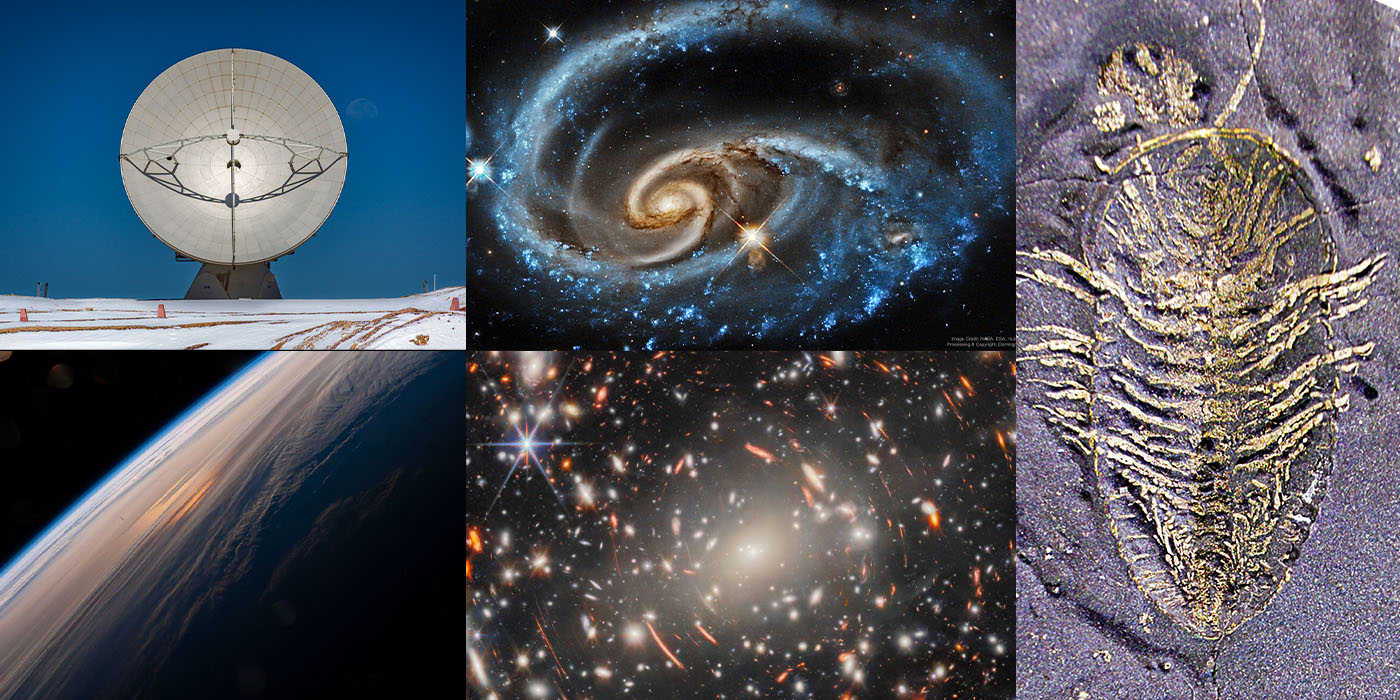
Planetary Picture of the Day - Week of June 02, 2025
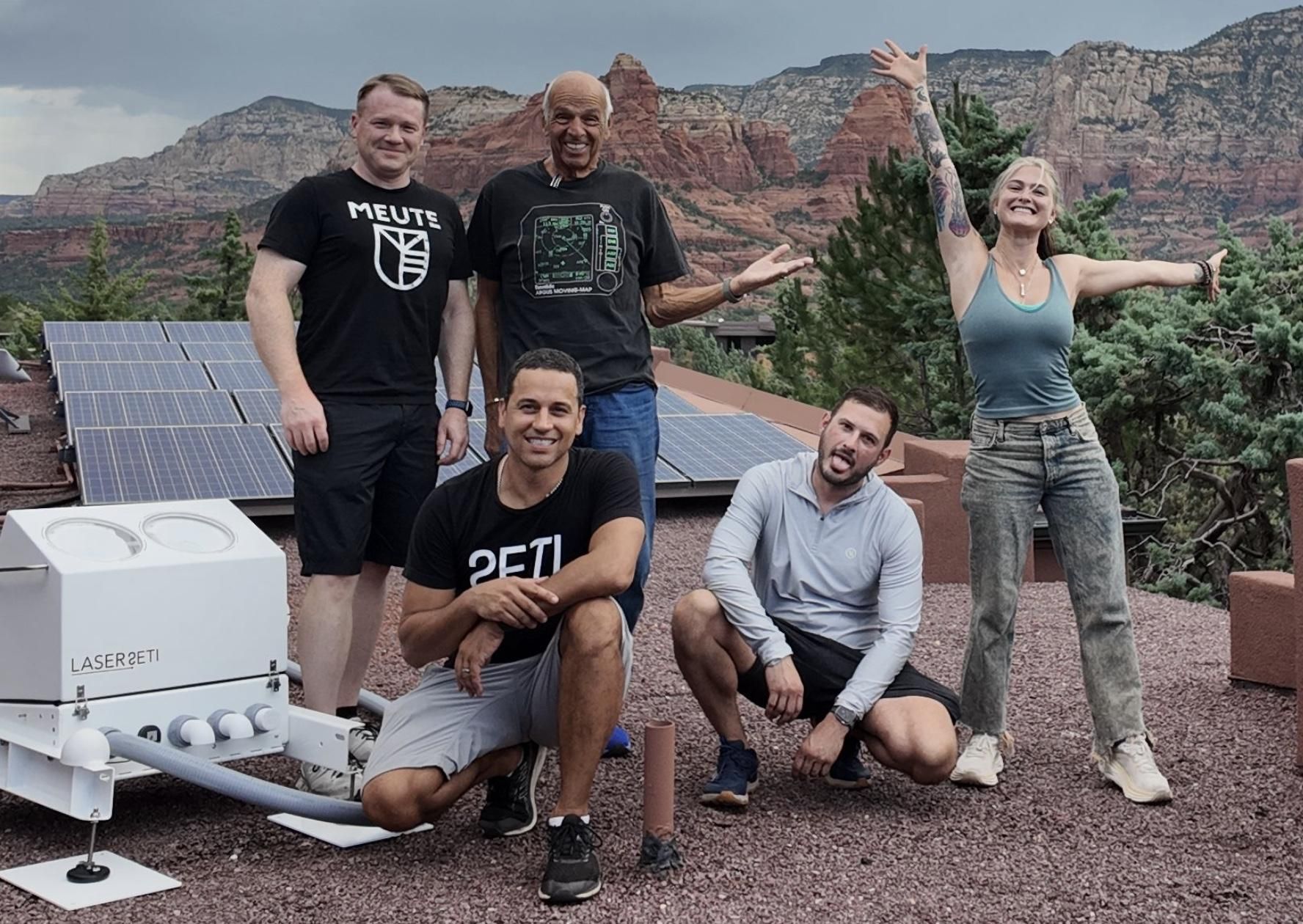
Searching for Life from the Rooftops
#LaserSETI #SETI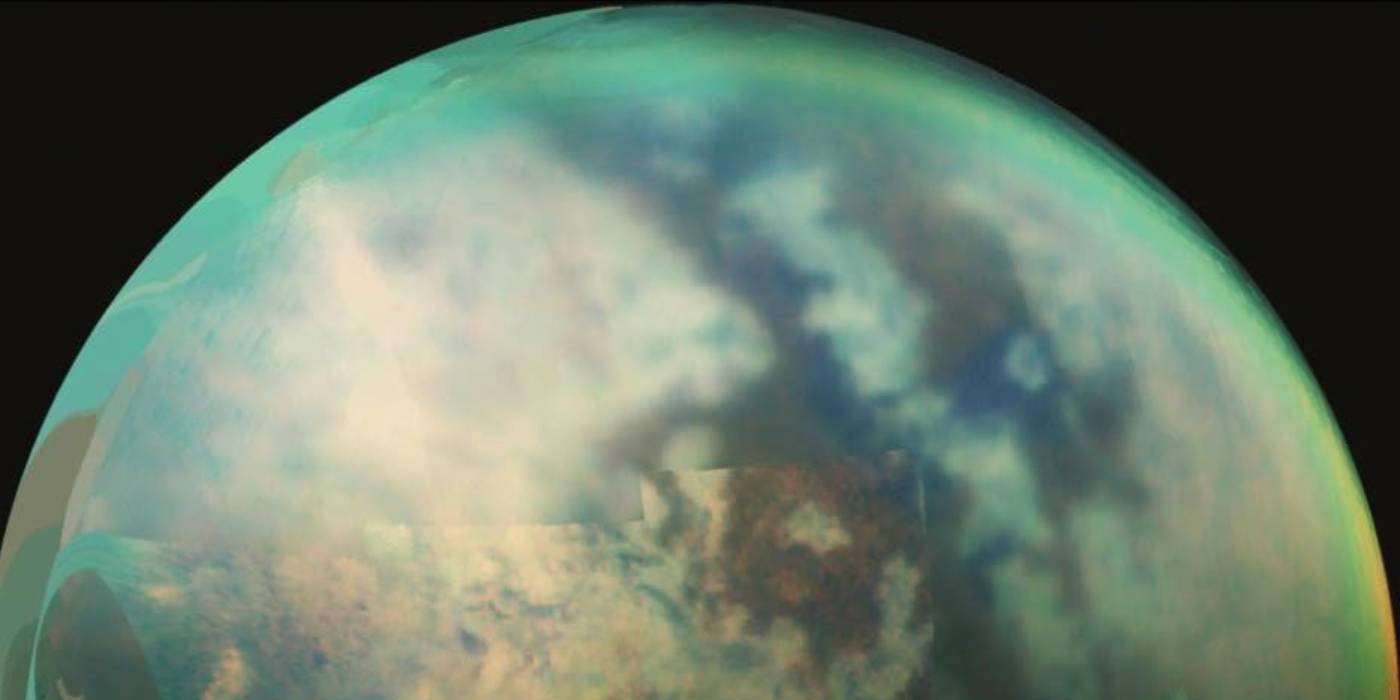
Titan’s Missing Deltas? What Cassini Saw — and What It Didn’t
#SETI Live Blog #Solar System #Astrophysics #Astrobiology #NASA Missions and Observatories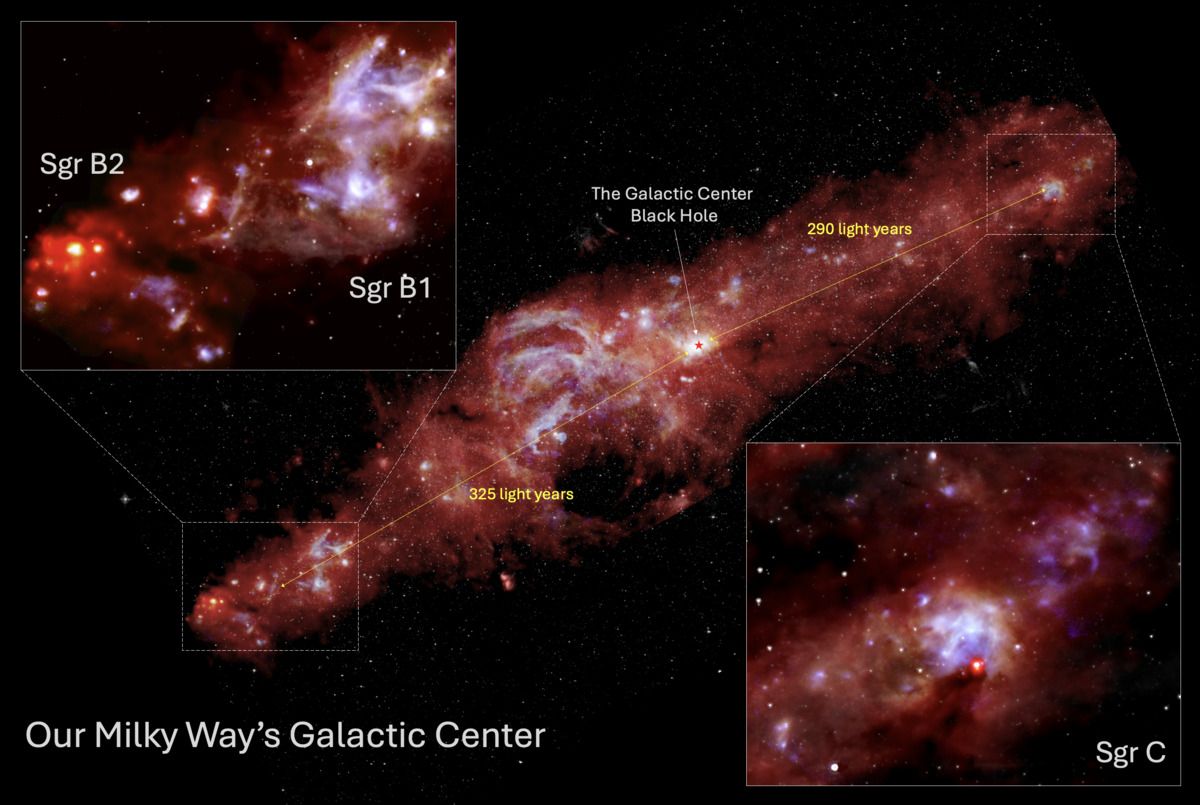
Unusual Stellar Nurseries Near Our Galaxy’s Center Puzzle Scientists
#Press Releases #SOFIA #NASA Missions and ObservatoriesResearch
Related Projects

Technosignatures SAG
Technosignatures SAG is a group of volunteer experts who have been chartered by NASA to produce a report to NASA’s Exoplanet Exploration Program, containing the results of its analysis on how NASA can better integrate technosignature search into its portfolio. #Technosignatures SAG #Technosignatures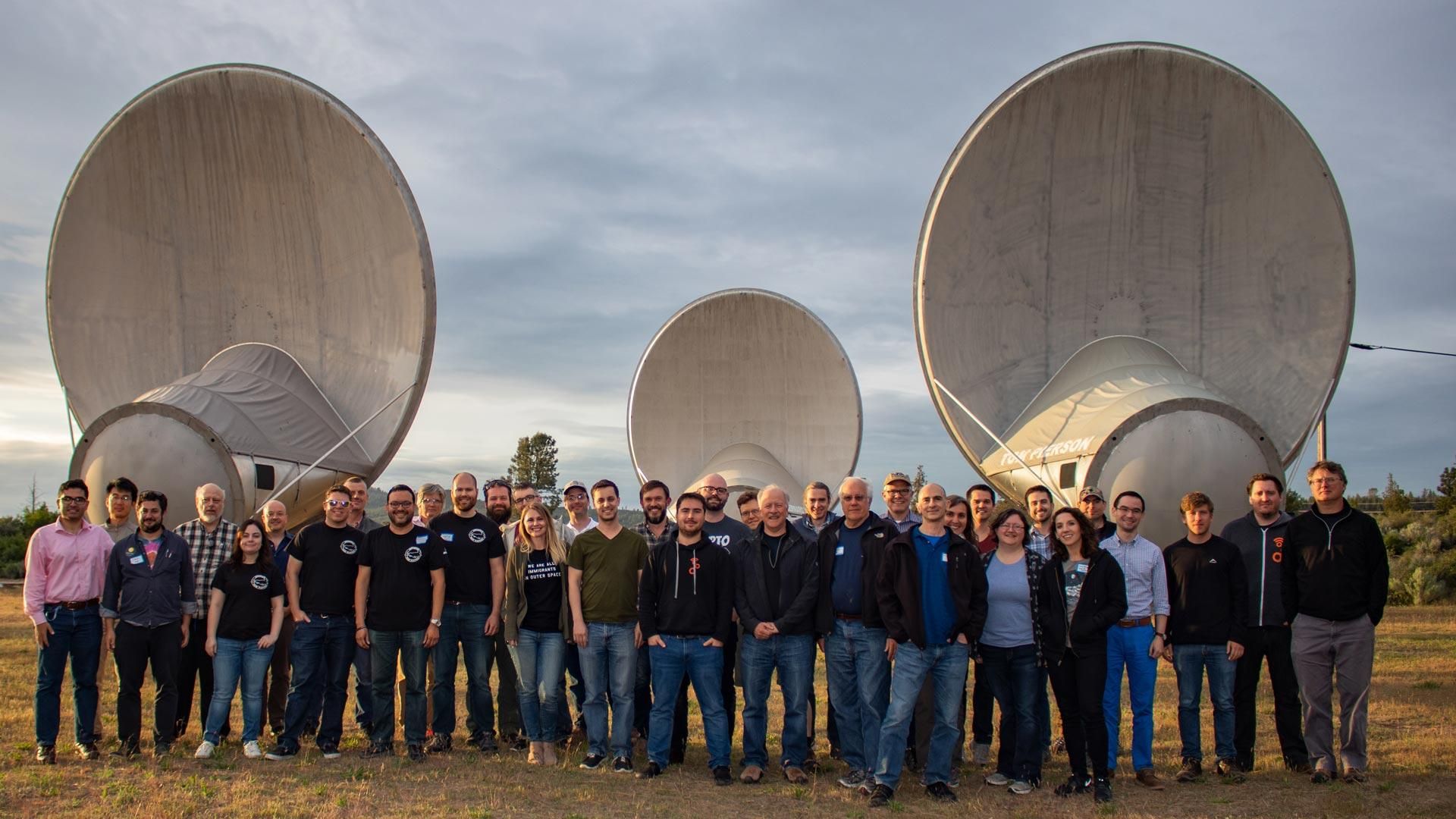
GNU Radio and SETI
GNU technology could revolutionize the development of receiving equipment for SETI (and for radio astronomy in general.) It promises to speed the design of new receivers, and to allow scientists to quickly change how data are analyzed and displayed. #GNU Radio #Radio Astronomy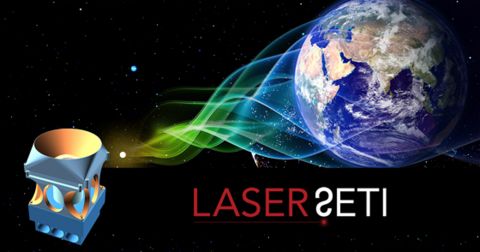
LaserSETI
SETI Institute’s LaserSETI program is building a network of instruments to monitor the entire night sky. This network represents an unprecedented growth in the continuing search for manifestations of sophisticated intelligence beyond Earth. #LaserSETI #Optical SETISupport the
SETI Institute
Scientists are getting closer in their search for life beyond earth. But with limited federal funding for the search for extraterrestrial intelligence, supporters are the reason cutting-edge scientists can keep their eyes on the sky.
)
